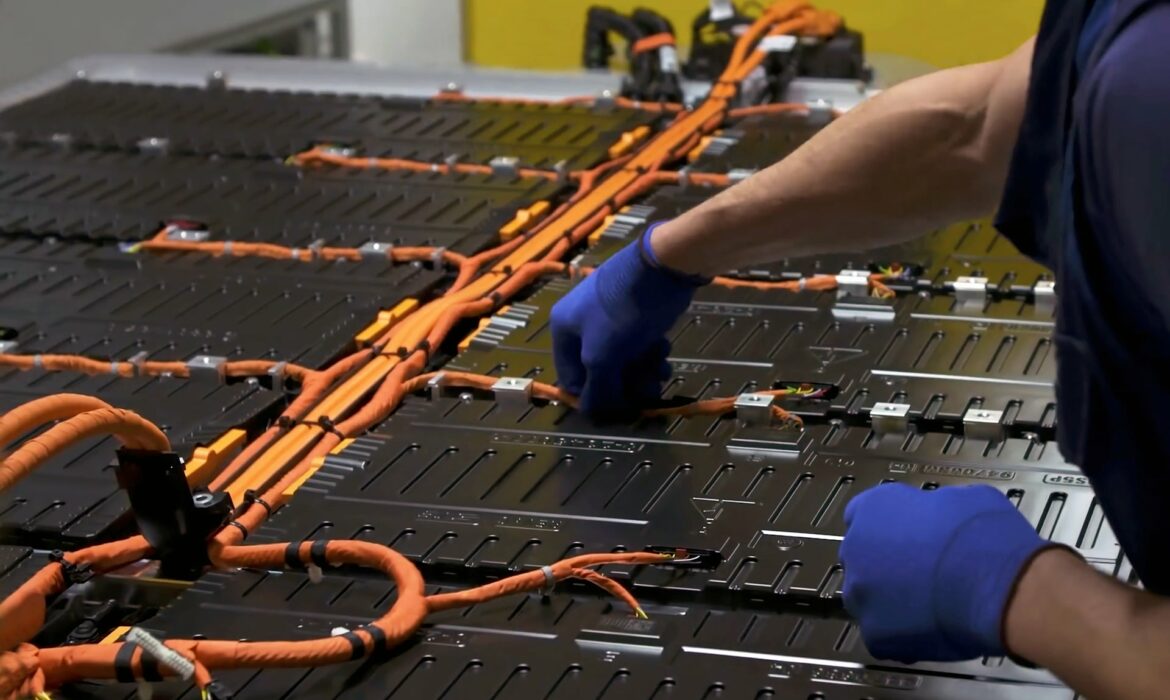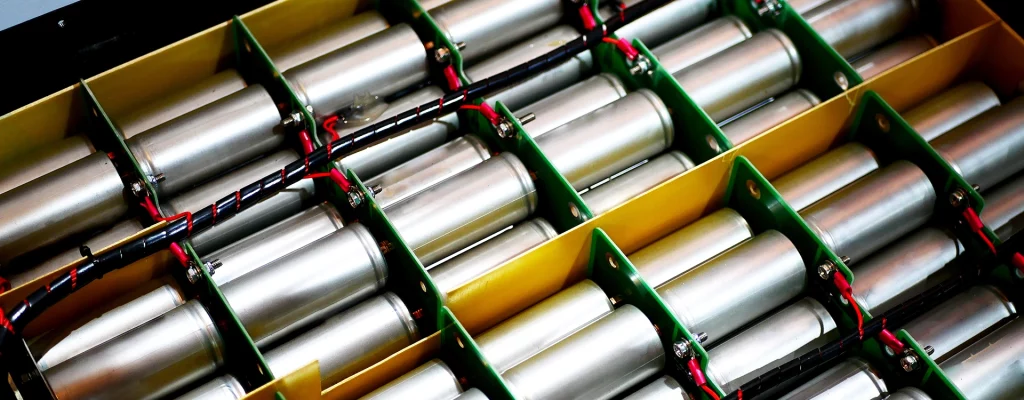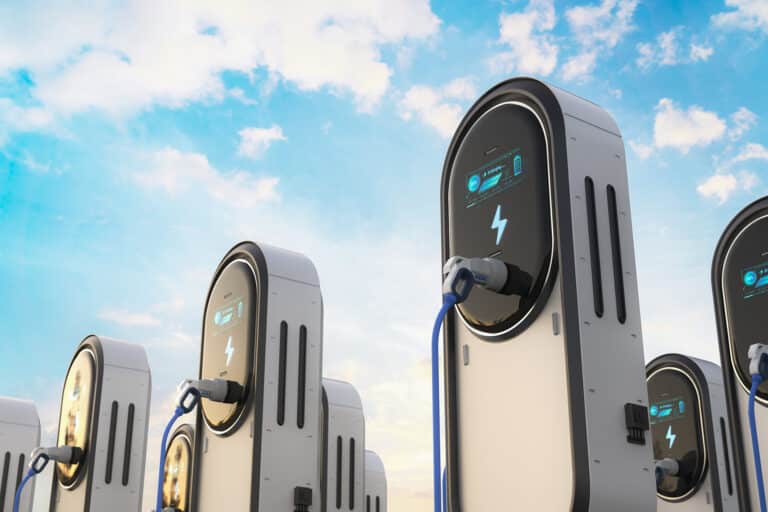
Increasing capacity and meeting decarbonisation goals – can it be done?
We discuss the cost and infrastructure considerations of switching to an all-electric fleet of off-highway vehicles.

Dominic Tribe is a Partner and Automotive sector specialist at Vendigital. He recently shared his insights with Engineering & Technology.
The UK car industry may be falling behind its competitors, but with joined-up thinking and investment from manufacturers, industry bodies and the government it’s not too late to for it to catch up.
The collapse of battery manufacturer Britishvolt and its plans to build a new gigafactory sent a message to the emerging electric vehicle industry that mass production of EVs in the UK may no longer be viable. Even now, with the plant under new ownership, the focus for the time being at least is on making batteries for energy storage and the defence industry, rather than for EVs.
With domestic car production down to its lowest level for 66 years, what can the industry do to adapt and overcome this latest setback?
The transition to EVs is gaining momentum year-on-year, and without significant investment, the UK could fall behind other countries. From a tier-one supplier’s perspective, the lack of a clear EV proposition that includes battery manufacturing capabilities makes the UK a less attractive prospect for investment, potentially leading to a reduction in output and rising costs.
The demise of Britishvolt’s planned gigafactory means that there is currently no UK manufacturer of EV batteries of significant scale to service the growing requirements of vehicle OEMs in the sector. Instead, UK EV manufacturers may have to look overseas to source the components they need, absorbing shipping and import costs into their procurement strategies.
While countries like China appear to have the lead in the fast-growing global EV market, due to access to materials as well as manufacturing capability, the UK can still play a role in battery manufacturing if it is able to move quickly. In the race to optimise market share, countries that can make the battery cells and then incorporate them into packs and modules will be best placed to succeed. While a lack of raw materials could mean the UK has to focus on the second part of the process, it must ensure it can achieve an end product with the right price point for the mass market.

There are opportunities for the UK to play to its strengths in innovation and intellectual property by adding long-term value to the process, and by being inventive with the design of the modules and packs. For example, technologies designed to improve a pack’s thermal efficiency could prevent early deterioration and improve performance. Similarly, adopting new ‘light-weighting’ technologies to counter the excessive battery weight would also improve vehicle performance and range. EV tech companies could also explore alternative power sources, such as hydrogen and synthetic ‘e-fuels’, potentially becoming a leader in a field outside of EVs. While this may be one solution to a difficult problem, it won’t be one that soothes the short- to medium-term doubts of OEMs as they begin to question the value of manufacturing EVs in the UK.
With batteries typically representing between 30 and 40 per cent of the cost of an EV, it makes less financial sense for manufacturers to bring these expensive components to the UK for assembly. Consolidating battery requirements through a single supplier is likely to achieve a cheaper price, and as order volumes increase in line with demand, economies of scale could help to offset the cost of transport.
Whatever the potential solution, the sector needs more support from the UK Government. The transition to EVs from internal combustion engine vehicles is under way, and positive intervention is needed quickly to ensure that jobs, industry knowledge and intellectual property are safeguarded. With good locations and a skilled workforce already in place in situ, the UK is ideally placed to attract investment from established car makers and EV platforms alike. While some of this investment is happening on a smaller scale, for example with Ford’s recent investment in Merseyside, much greater support is needed to ensure that the UK attracts and retains the right investment.
A key part of this solution will be ensuring that incoming legislation such as the Trade and Cooperation Agreement doesn’t have too much effect on trade, and that any tariff costs can be recovered. For a vehicle to qualify for tariff-free trade between the UK and the EU, the batteries will have to be assembled in either territory. This means that any potential UK-wide solution will have to include an element of domesticated battery production to qualify for tariff-free trading, so it is important that the industry acts now to secure as much share of the market as possible.

However, in order to drive sales figures, manufacturing outputs must increase. To meet current demand forecasts, it is estimated that eight gigafactories are needed in the UK by 2040 to keep up with the investment and production volumes of other countries. While the gigafactory in Blyth will be going ahead, the focus on batteries for energy storage means that EV makers will need to purchase batteries from overseas, which could leave the UK’s nascent EV industry on the back foot for longer than anticipated.
Domestication could also be a trend that affects global EV supply chains, due to challenges brought on by the Covid-19 pandemic, rising inflation and semiconductor shortages, with many OEMs considering how they can achieve the most control and continuity over supply. For example, some are investigating options such as longer-term purchase agreements to secure raw materials and onshoring high-value items to minimise the impact of trade tariffs.
OEMs are also exploring the use of alternative sourcing strategies to optimise performance and improve competitiveness by reducing cost and decarbonising their operations. Some are realising the benefits of shared knowledge pools that utilise data-based tools to provide real-time visibility of product or material availability; a lesson learned from the semiconductor shortage. This visibility will become more enhanced as digital twinning processes are developed across global supply chains, and simulation capabilities make it possible to play out different scenarios so they can be planned for in advance.
The UK’s car industry may be falling behind, but with significant investment from manufacturers, industry bodies and the government, it is not too late to catch up. With some joined-up thinking about how the UK can differentiate itself from other countries, for example, through its focus on innovation, and improving supply chain resilience, the future for UK car manufacturing could still rise to the top.
Sign up to get the latest insights from Vendigital
Improve your operational performance
Related Insights

We discuss the cost and infrastructure considerations of switching to an all-electric fleet of off-highway vehicles.

EV makers in the UK and Europe are warning that Zero Emission Mandates are simply not doable and subdued levels of demand could force them to close factories. Should the industry embrace Chinese capability before it’s too late?

In our latest report we examine the impact of power electronics and the importance of inverters in EV manufacturing.
Subscribe to our newsletter